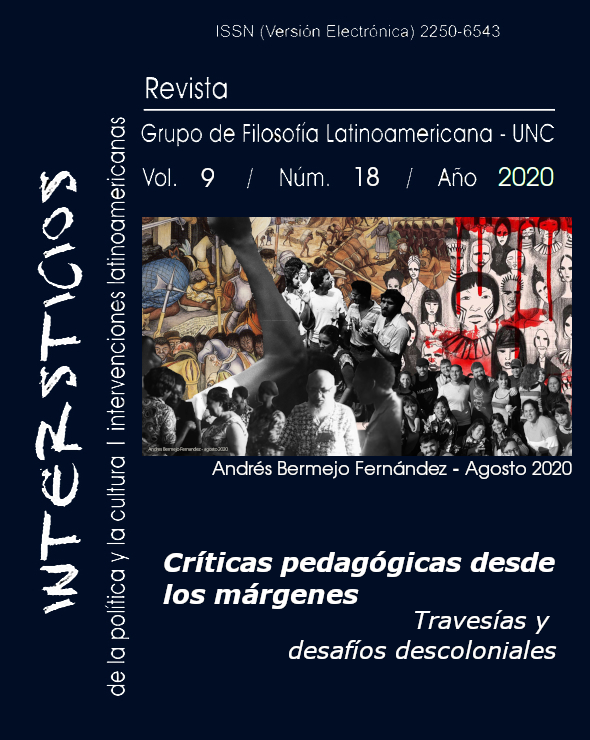21st Century Oppressed: The relevance of Paulo Freire's Pedagogy of the Oppressed
Keywords:
Oppressor, Oppressed, Banking education, Critical education, LiberationAbstract
This article attempts to demonstrate the validity of the categories of "oppressor" and "oppressed" formulated by Paulo Freire in his famous "Pedagogy of the oppressed" (1969). The context of text production and the significance of both categories are analyzed within the framework of its educational theory and the operative aspects in our present. Likewise, the thought of the Brazilian pedagogue is linked to authors of the tradition of Latin American educational thought on the one hand such as Rodríguez and Martí; but also with authors who analyzed oppression such as Dussel or Frantz Fanon.
Downloads
References
Chomsky, N. (2012) La (des)educación. Madrid: Crítica.
Dussel, E. (2011) Filosofía de la liberación. México. Fondo de cultura económica.
Fanon, F. (2009) Piel negra máscaras blancas. Madrid: Akal.
Freire, P. (2010) Pedagogía de la indignación. Madrid: Morata.
Freire, P. (2012) Pedagogía del oprimido. Madrid: Siglo XXI España.
Forrester, V. (2000) El horro económico. México: Fondo de cultura económica.
Martí, J. (2018) Nuestra América. Barcelona: Red Ediciones.
Ornelas, R (coord.) (2013) Crisis civilizatoria y superación del capitalismo: Instituto de Investigaciones económicas UNAM México: México.
Robinson, A. (2020) Oro, petróleo y aguacates Las nuevas venas abiertas de América latina. Barcelona: Arpa.
Rodriguez, S. (2004) Inventamos o erramos. Caracas: Monte Avila Editores latinoamericana.
Downloads
Published
Issue
Section
License

This work is licensed under a Creative Commons Attribution-NonCommercial-ShareAlike 4.0 International License.
Authors who have publications with this journal agree to the following terms:
a. Authors will retain their copyright and grant the journal the right of first publication of their work, which will simultaneously be subject to the Creative Commons Attribution License that allows third parties to share the work as long as its author and first publication in this journal are indicated.
b. Authors may adopt other non-exclusive license agreements for distribution of the published version of the work (e.g., deposit it in an institutional telematic archive or publish it in a monographic volume) as long as the initial publication in this journal is indicated.
c. Authors are allowed and encouraged to disseminate their work through the Internet (e.g., in institutional telematic archives or on their web page) after the publication process, which may produce interesting exchanges and increase citations of the published work (see The effect of open access).


